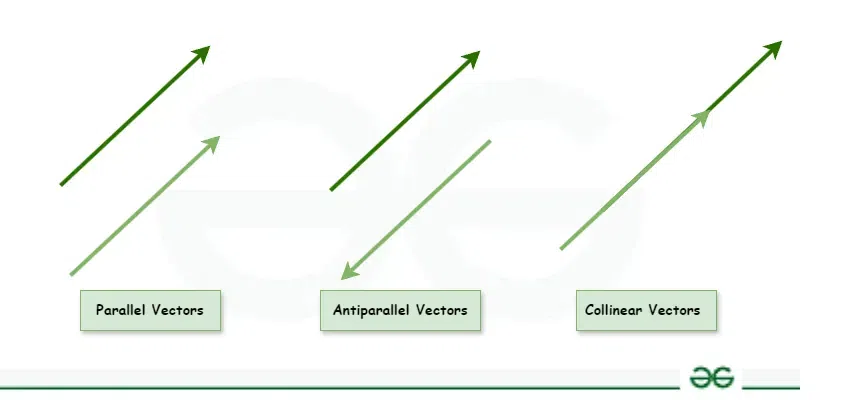
|
|
Parallel vectors are considered one of the most important concepts in vector algebra. When two vectors have the same or opposite direction, they are said to be parallel to each other. Note that parallel vectors can differ in magnitude, and two parallel vectors can never intersect each other. They are widely used in mathematics, physics, and other areas of engineering for defining lines and planes, representing force and velocity, and analyzing various structures. In this article, we will learn about parallel vectors, the dot product, and the cross product of parallel vectors, as well as their properties, in detail. What are Parallel Vectors?
Parallel vectors may or may not differ in magnitude. Sometimes, when the angle between two parallel vectors is 180°, they are also referred to as antiparallel vectors. Parallel vectors are also known as collinear vectors because they lie on the same or parallel lines. 
How to Find Parallel Vectors ?If two vectors are parallel to each other they can be represented as scaler multiple of one another i.e. we can say that the given two vectors X and Y are parallel, if there exists a unique number ‘k’ such that:
where k can be positive, negative or zero.
Unit Vector parallel to Given VectorUnit vectors is a vector whose magnitude is one unit. Unit vector parallel to the given vector is the vector whose magnitude is one and in the same direction as given vector. To find unit vector parallel to the given vector divide the given vector with its magnitude as
Therefore, the vector â is a unit vector parallel to given vector a, obtained by dividing the given vector a with its own magnitude. Dot Product of Parallel Vectors
By definition of dot product of two vectors we know that, a.b =|a| |b| cosθ As angle between parallel vectors is zero, a.b = |a| |b| cos0 a.b = |a| |b| (1) a.b = |a| |b| Hence it is proved that the dot product of two parallel vectors is the product of their magnitudes. Cross Product Of Parallel vectors
From the definition of cross product we know, a×b =|a| |b| sinθ Û . Here Û represent the unit vector in the direction of a×b. a×b = |a| |b| sin0 Û . a×b = |a| |b| (0) Û . a×b = 0 Hence it is proved that he cross product of two parallel vectors is always zero. Properties of Parallel VectorsSome of the Important properties of Parallel vectors are as below:
Sample Problems on Parallel VectorExample 1: Verify whether the vectors are parallel , antiparallel or intersecting U=3i + 2j -k and 3V =i + 2j – k. Solution:
Example 2: Find a Unit Vector parallel to given vector U = 3i + 4j + 12j? Solution:
Example 3: Find the dot and cross product of the vectors U = 3i + j -2k and U = 6i +2j – 4k? Solution:
Example 4: Find a vector parallel to the vector U = 3i + 4j and has magnitude twice the magnitude of U? Solution:
FAQ on Parallel VectorWhat are parallel vectors?
Can parallel vectors be called collinear vectors?
Do parallel vectors always have the same starting and ending points?
Is there any vector parallel to every other vector?
Why is every vector parallel to itself?
Are parallel vectors and equal vectors the same?
|
Reffered: https://www.geeksforgeeks.org
| Class 11 |
Type: | Geek |
Category: | Coding |
Sub Category: | Tutorial |
Uploaded by: | Admin |
Views: | 16 |